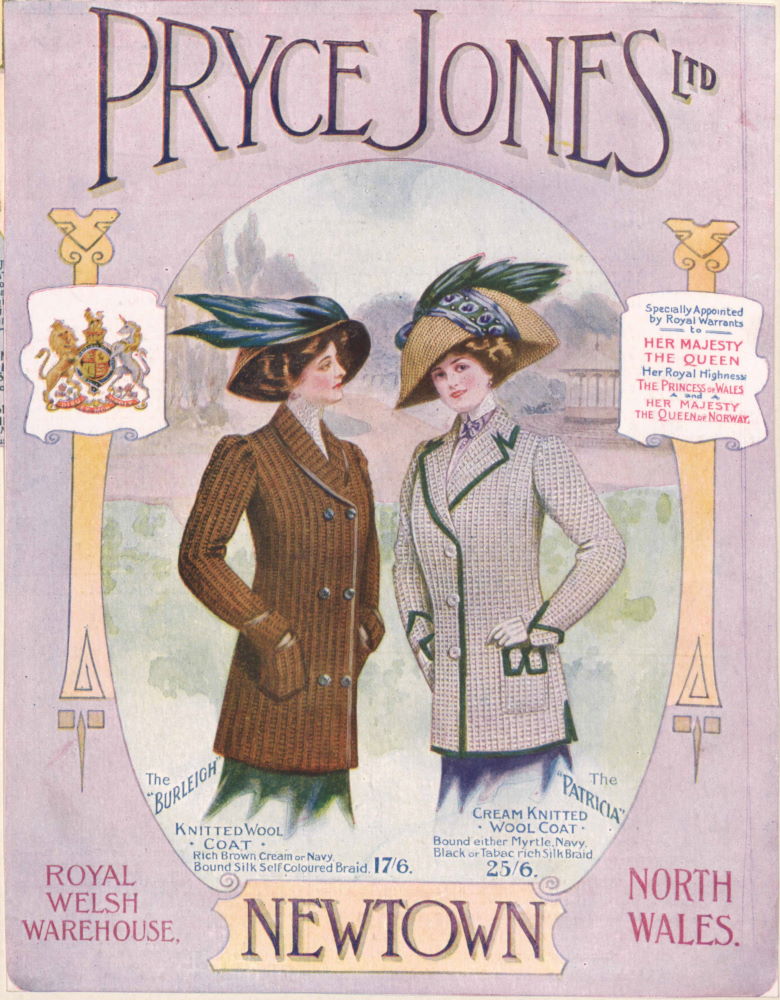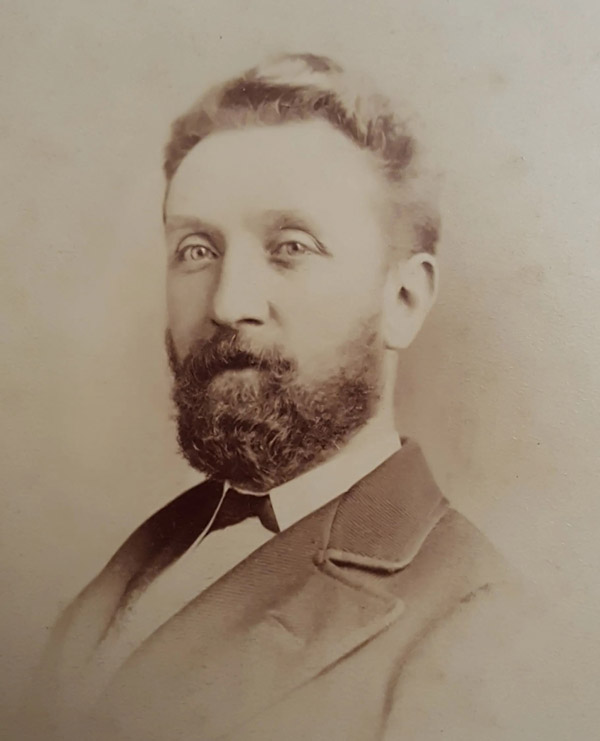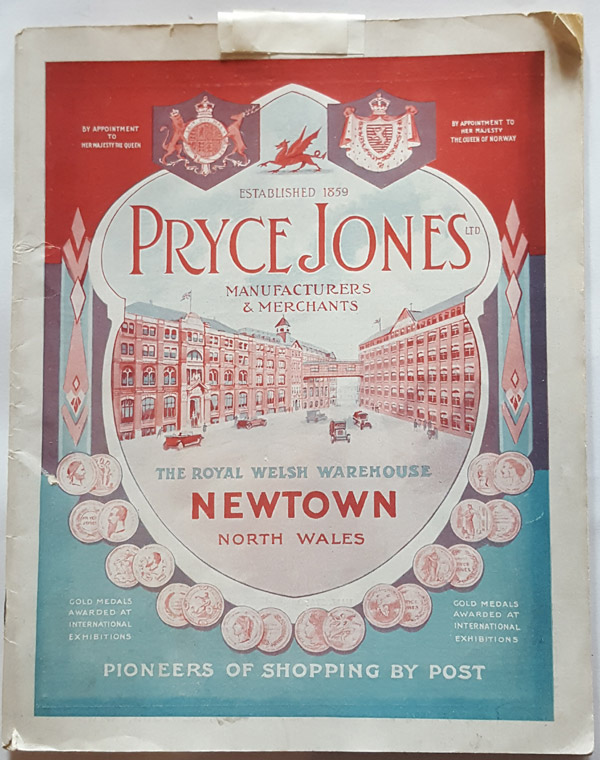In the beginning of the 19th century, a large Welsh town called Newtown on the River Severn became the center of the woolen industry. Like other towns in the upper Severn Valley, Newtown’s population exploded within a short period, as mills jostled for a place by the riverside. Weavers paid extortionate rent to flannel manufacturers to live on the lower floors, the top floors being occupied by sophisticated machines such as the spinning jenny, that spun threads from wool in large open workshops. It was here in Newtown, in 1859, that Pryce Pryce-Jones opened his own draper shop. He named it the Royal Welsh Warehouse. Two years later, Pryce-Jones would build the world's first mail-order business.

A postcard advertising Pryce Jones mail order business. Photo: Northumberland Archives
Pryce Pryce-Jones had inherited the shop from his employer John Davies, under whom Pryce-Jones had worked since he was twelve. After Davis died, Pryce-Jones took over the business, got married and opened his own little shop selling drapery just off Broad Street. That same year the railway came to Newtown.
Perhaps it was while watching the trains leave for different destinations everyday, that Pryce-Jones came to realize that here was a new opportunity to exploit. Instead of selling his wares over the counter, just like any other wool merchants in town, Pryce-Jones thought why not let customers order them by mail and he could dispatch his goods by parcel post. This could be a convenient way for people living in isolated locations to shop, without taking the time or effort to travel to town.
To tests the waters, Pryce-Jones sent out samples of his merchandise as well as leaflets with price lists to local customers. Their orders were dispatched by stage coaches. Once he was confident the idea would work, Pryce-Jones rented a warehouse next to the railway line and began sending out catalogues.

Flannel samples from the Royal Welsh Warehouse. Photo: Powys: A Day in the Life

A Pryce Jones Catalogue. Photo: Bodleian Libraries
Pryce-Jones’s mail-order business was a roaring success. With the help of the expanding railway network, Pryce-Jones was able to sell Welsh flannel all over Europe, and eventually to America and Australia as well. He handled so many deliveries that the London and North Western Railway Company provided him with three vans for daily deliveries along the Newtown to Euston line, and he was able to promise next day delivery to most of England. By 1880 he had in excess of 100,000 customers, and even Florence Nightingale and Queen Victoria used to order from his catalogue. Pryce-Jones advertised this fact on the company’s adverts, which in turn attracted even more business.
“Florence Nightingale liked his stuff so much he named a special width of flannel after her, the Florence Nightingale flannel,” local historian John Evans told BBC.
“Queen Victoria was an early customer and it was said Queen Victoria only wore Welsh flannel bloomers!”

Pryce Pryce-Jones
Having outgrown his original warehouse, Pryce-Jones moved into a new spacious building in 1879. This was enlarged in 1887 and 1904. Such was the volume of mail orders that the warehouse even had its own post office branch inside.
Flannel was the mainstay of Pryce-Jones’s business. One of his products was the Euklisia Rug—an all-in-one rug, shawl, blanket and pillow—that Pryce-Jones invented and exported around the world. Thousands of these rugs were sold to the Russian and British army. They were also used extensively by German troops during the Franco-Prussian War of 1870-1 and later inspired the invention of the “sleeping bag”.
For his efforts, Pryce-Jones was knighted in 1887 by Queen Victoria. He also became the High Sheriff of Montgomeryshire.
The Royal Welsh Warehouse still stands in Newtown. Unfortunately, his business didn’t survive. During the economic depression of the 1920s, Newtown’s flannel business was hit hard, and the Royal Welsh Warehouse sold its business to a Liverpool firm in 1938.

The Royal Welsh Warehouse in Newtown. Photo: Alex Liivet/Flickr



References:
# Pryce-Jones: Pioneer of the Mail Order Industry, BBC
# Pryce Jones and the Royal Welsh Warehouse, Powys: A Day in the Life
# The Welshman who invented the world's first sleeping bag, BBC
# Christmas: The mail order pioneer who started a billion-pound industry, BBC



Comments
Post a Comment